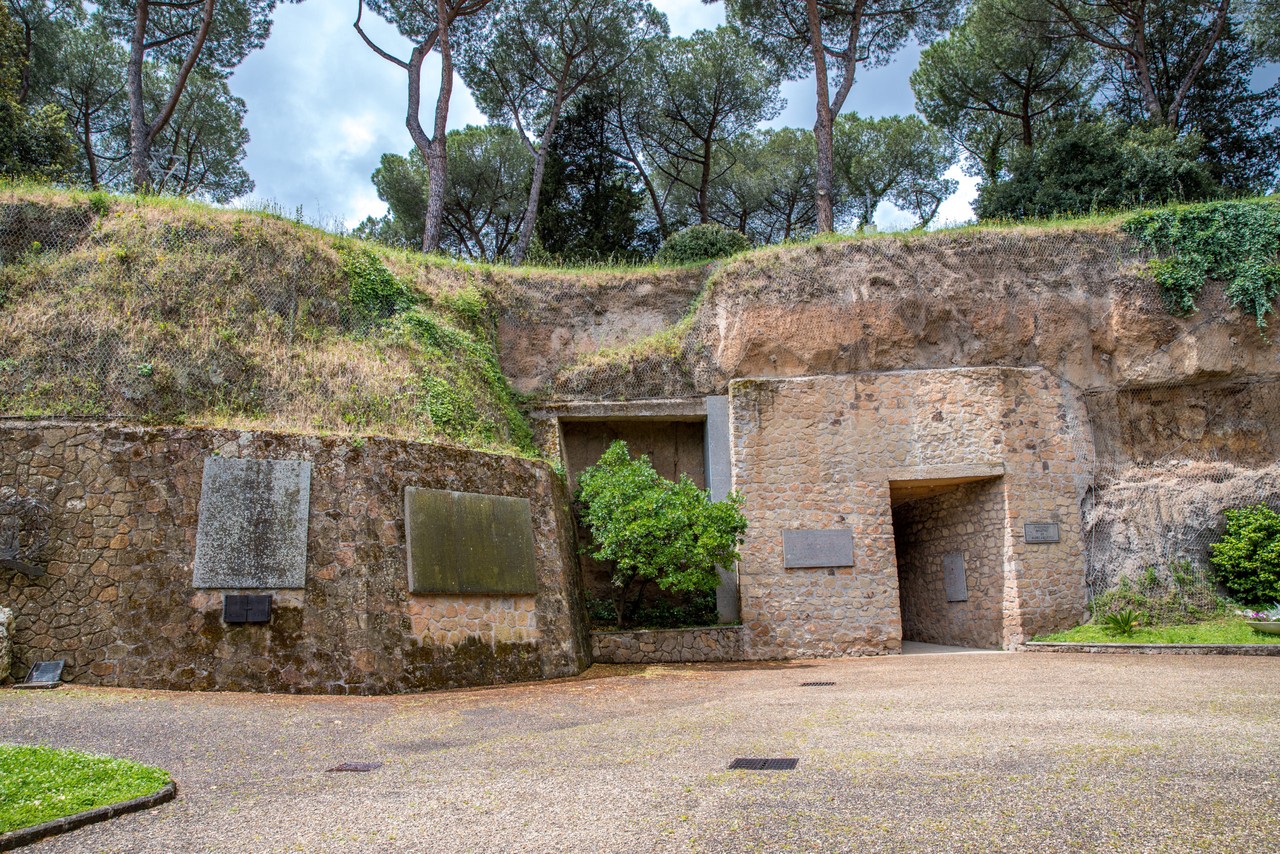On 23 March 1944, members of the Italian resistance attacked a group of German soldiers on Via Rasella in Rome. In reprisal, the German forces executed 335 Italian civilians. This number included many ex-soldiers of the Underground Military Front of the Resistance (Italian: Fronte Militare Clandestino della Resistenza, FMCR), who were incarcerated in the prison of Via Tasso, 75 Jews and civilians who were rounded up in the streets immediately after the attack. Colonel Herbert Kappler, the commander of the German police and security service in Rome, with the help of the SS Captain Erich Priebke, wrote the list of the condemned. The list included prisoners for minor crimes and people who were only suspected to have relations with the resistance.
The abandoned caves near the Ardeatine way, just outside of Rome, near the San Callisto catacombs, were chosen as the execution site. The massacre took place in a sequence of 335 single murders, with the proportion of ten Italians for every German killed in the Via Rasella attack, plus five more Italians included by mistake. Despite being a simple memorial, the Fosse Ardeatine Memorial is incredibly poignant. It embraces the caves where the executions took place, the Mausoleum with the bodies of the victims, and a sculpture that remembers the 335 martyrs. It is one of the most meaningful buildings of contemporary Rome.
On November 22, 1947, work began, and two years later, the fifth anniversary of the massacre was commemorated by the inauguration of the memorial. The Mausoleum hosts official celebrations of the massacre every year, and welcomes thousands of visitors, especially schools.
